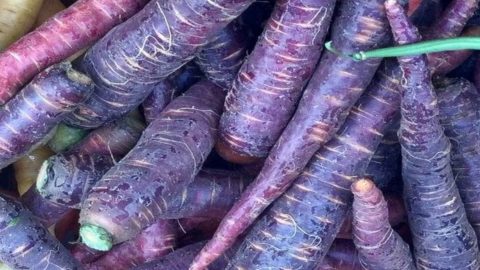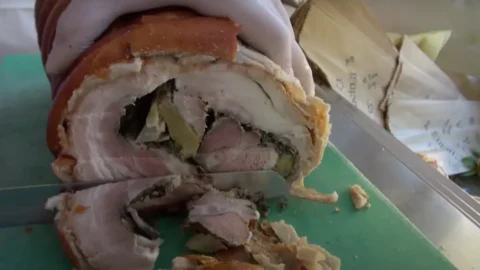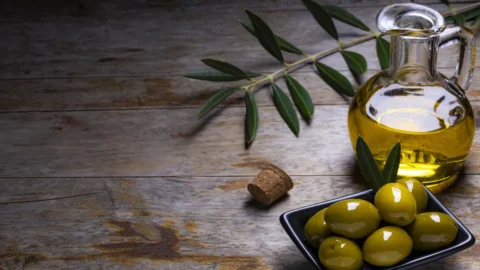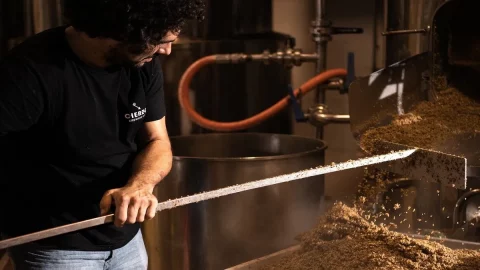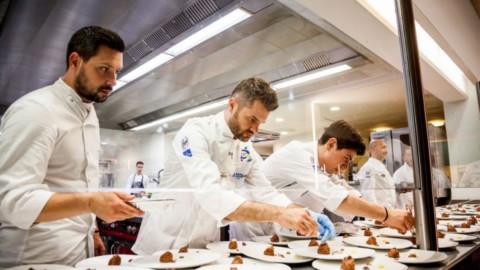When we talk about carrots we think of the classic orange color. Actually, the carrots were purple and their homeland is Afghanistan, where they were cultivated more than 5000 years ago. The Arabs brought them to the rest of Europe around the XII century: from Spain to Italy, from France to Germany up to the Netherlands. Right here, many experiments were made, arriving at giving it the classic orange colour, in honor of the ruling dynasty of the time, the Oranges.
Since then, orange carrots spread throughout Europe replacing the purple ones, also because the new color was considered much more pleasant and inviting than the original (between purple and violet). Currently there are 4 variants of this vegetable: orange, white, yellow and purplevery common in China. Beyond the color, carrots have numerous beneficial but also healing properties. So much so that the ancient Egyptians, Romans and Greeks already used them as a scar.
Even among the purple carrots there are different types: the Deep Purple, with pointed roots and a length of almost 25 cm, with an orange central part, le Purple Haze, with a dark purple color and a length of up to 20 cm, with the central area of a beautiful purple. Then there are the Italian ones, a Polignano a Mare in the province of Bari, considered a Slow Food Presidium for their rarity and excellence.
Purple carrots have numerous beneficial properties, so much so that the Australian University of Queensland has defined them as "miraculous for human health". What distinguishes them from the classics, to which we are all accustomed, is the high amount of anthocyanins. These are water-soluble pigments which, in addition to giving them a dark colour, are also powerful natural antioxidants (12 times greater than normal ones), capable of fighting aging or pathologies such as asthma or arthritis.
Like all carrots, they are great allies of sight and eyes, thanks to the presence of anthocyanins which improve night vision, as well as capillary circulation. Rich in mineral salts such as potassium, iron, calcium, phosphorus, magnesium and zinc, also have ahigh percentage of vitamins B, C, PP, D and E. However, unlike the classics, they do not contain beta-carotene, the important precursor of vitamin A responsible for their colouring, so they have no effect on skin pigmentation. However, they are low in calories (41 for every 100 grams), they are very useful for those who follow low-calorie diets.
These carrots also contain a smaller amount of sugars, for this reason it can be consumed by diabetics without problems, unlike the classic ones which require a certain moderation. They are also excellent antiseptics, antiviral and antifungal. In addition, purple carrots promote the reduction of cholesterol, helping to have healthy blood circulation.
In Italy, a very renowned and prized variety of purple carrots is that of Polignano, grown in the San Vito area.
The purple carrots of Polignano have become a Slow Food Prison, recognition given to rare and excellent quality agricultural products grown according to precise rules aimed at recovering tradition.
In Polignano the carrot seed is still selected by the farmers and therefore the vegetable does not have the stabilized orange color of the seed industries. The farmers choose the best plants every year, plant them in small separate plots and select the seeds of the most flourishing ones. And they replant them from August 15th to September 15th, regardless of the colour: so when harvested, you have medium-length carrots (from 15 to 22 centimetres) which present an infinite number of shades.
But the extraordinary nature of this crop lies in the flavor of these carrots. The basically sandy fields – 10 hectares in total – have a rather high average salinity and this salinity is enhanced by the irrigation which is carried out by drawing brackish water. You pump it from a nineteenth-century well, in stone, dug by hand, which at a depth of 12 meters is in communication with the first marine infiltrations. In fact, the irrigation cycle follows that of the tides: when the sea is low, the wells do not receive water and are supplied with small underground reserve basins.
Once upon a time, a patient donkey rotated lu gegnu, a system of pulleys that served admirably when needed. Today electric motors are obviously used, but the result does not change: when you bite into these freshly picked carrots, you have a very clear sensation of sapidity and coolness. The most tiring and delicate phase of the process is undoubtedly the harvest, which is done starting from the end of November. All by hand, using a pitchfork to loosen the earth around the plant, which is carefully extracted, separating the stem from the leaves and placing the stem in boxes filled with brackish water.
The water in the boxes – placed on a tilting surface – is continuously stirred by pistons moved by a washing machine motor and fed with new water, until it is clean and the carrots are perfectly washed. After all this work, the Polignano carrots go to the market where only a few cents more than the normal ones sprout: thus a heritage of biodiversity and taste literally runs the risk of disappearing.
The recovery and valorisation of this vegetable is essential to carry on a centuries-old tradition, to recover the old tradition of cultivation and the seeds kept for generations by local families. But also to enhance the farmers who currently sell carrots to fruit and vegetable traders, who pay them a negligible price compared to the value of the product, or on the local market frequented above all by tourists.
The three carrot producers of Polignano have gathered in the association "La bastinaca di San Vito" (bastinaca or parsnip is the dialectal name given to these carrots) which aims to make this carrot known and encourage farmers to continue cultivation, in order not to lose one of the most important agricultural traditions of this territory.
The purple-colored carrot has the same nutritional values as orange carrots with the exception of a lower percentage of sugars, a feature that makes them suitable to be eaten, even by people with diabetes who, however, must limit the consumption of traditional carrots.
In a pan, baked, raw, as an appetizer, or for appetizing side dishes. Carrots can be used in any way, even to prepare soups, velvety or desserts, such as cupcakes, cakes and muffins. Especially the purple ones, which are sweeter and crunchier than the classic ones. If, on the other hand, you want to enjoy the properties of this vegetable, it can be used as a base for a tasty natural smoothie, perfect as a snack or to accompany meals throughout the day.
It is not easy to find purple carrots in the markets but they can be found on the net (on organic e-commerce), or in supermarkets or fruit and vegetable markets that offer a greater variety of products to their customers.
Two quick recipes, a colorful and tasty risotto and a cupcake but also rich in nutritional properties
Ris below of purple carrots:
Ingredients:
360 g of Arborio rice
3 purple carrots
1 shallot
1 of celery
Parmesan
Half a glass of white wine
Extra virgin olive oil
Butter
Salt and Pepper To Taste
Method:
Peel the carrots and cut them into pieces, being careful to keep half of them aside. Proceed by cutting the shallot into wedges and also in this case keep one aside. Then cut the celery into chunks. Put a pot of water on the fire, add salt, and when the water is hot, add the vegetables. Cook for about ten minutes. Set aside some cooking water.
Sauté the shallots kept aside and the carrot cut into julienne strips in olive oil in olive oil. When the vegetables have taken on a nice golden color, pour the rice to toast. Then add the white wine and a ladle of the carrot cooking broth, which you will continue to pour little by little until the rice is cooked. Finish by stirring in the Parmesan and a touch of butter.
With purple carrots you can also make a delicious Cupcake
Purple Carrot Cupcakes:
Ingredients:
Purple carrots: 250 gr
“00” flour: 150 gr
Potato starch: 50 gr
Almond flour: 100 gr
Seed oil: 120 ml
Eggs: 1
Yolks: 1
Baking powder: 16 gr
Vanilla pod: 1
Sugar: 200 gr
Milk: 2 tbsp
Lemon: 1
Procedure:
Clean and peel the carrots, then grind them with a mixer.
Whisk the eggs and sugar until stiff, then add the carrots, starch, 00 flour, almond flour, baking powder and vanilla. Mix everything by adding the lemon zest.
Continue adding the seed oil to the mixture, being careful to mix well until a soft dough is obtained (if needed, the dough can be softened by pouring in the milk sparingly).
The dough must rest at room temperature for at least half an hour.
In the meantime, line the muffin molds and fill each mold with two tablespoons of the mixture, no more to prevent it from leaking out of the mold during cooking.
Bake at 180°C for 25 minutes. And that's it. Then decorate everything as you like with almond flakes, with grains or colored sprinkles to your liking

